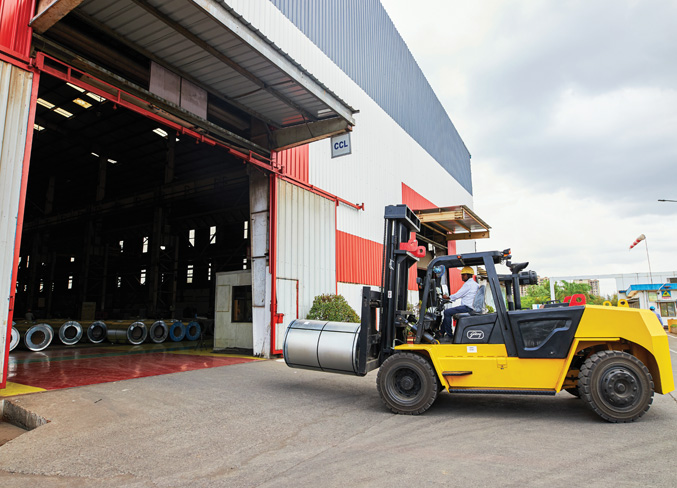We operate in a dynamic environment that not only provides opportunities but also exposes the business to various risks. To identify and manage key risks for achieving our strategic objectives, we have put in place a well-defined robust Enterprise Risk Management (ERM) framework that has matured over the past several years.
Our ERM framework serves as a structured approach to identify, prioritise, manage, monitor, and report on key risks and emerging risks. We adhere to the globally recognised Committee of Sponsoring Organisations (COSO) framework for ERM, which enables the seamless integration of internal controls into our business processes.
Our approach to enterprise-wide risk management encompasses both bottom-up and top-down strategies. The bottom-up process involves the identification and regular assessment of risks by our respective plants and corporate functions, followed by the implementation of effective mitigation strategies. Concurrently, our Risk Management Group (Senior Leadership Team) and the Risk Management Committee (RMC) adopt a top-down approach to identify and evaluate the long-term, strategic, and macro risks to our business.
The RMC, which operates as a sub-committee of Directors, provides oversight of the entire risk management process within our organisation. Chaired by an Independent Director, the RMC ensures that our ERM framework effectively addresses the following critical aspects:
We are cognizant of the fact that emerging and identified risks need to be mitigated to:


Risk decrease
(y-o-y)

Risk unchanged
(y-o-y)

Risk increase
(y-o-y)
Strategic risks

Impact
Our primary raw materials, iron ore and coking coal, and other commodities like thermal coal, natural gas, contribute to a significant portion of our operating cost. Iron ore, coking coal and other commodities' prices and availability depends on:
Response strategies
Iron ore
Coking coal

Impact
Increasing production capacity from 12 to 19.5 MTPA at our Vijayanagar plant result in logistics risks such as:
Response strategies
Infrastructure improvement has been undertaken to ensure seamless flow of inbound material and outbound goods. Some of these are:

Strategic risks

Impact
Response strategies
Pre-merger
Post-merger

Impact
Intensifying competition and ability to market increasing volumes
Response strategies
The domestic market is likely to see healthy steel demand due to
Expanding market share and customer retention through
Financial risks

Impact
Exchange rate changes/fluctuation between two currencies.
Response strategies

Impact
Interest rate increases in the key global economies could slowdown foreign currency inflows into the country, which could affect the value of domestic currency and interest rates and thus, adversely impact our ability to secure financing on favourable terms.
Response strategies
Operational risks

Impact
Risk of disruption in production due to non-availability of water/inadequate power supply for enhanced capacity.
Response strategies
Water
Electricity

Impact
Human capital with the requisite skillset and experience is critical to maintain the current level of operations and upcoming expansion at plant. Acquiring and retaining Response strategies talent is necessary to keep pace with business growth.
Response strategies
Senior leadership support in setting the tone at the top
Reputational risk

Impact
The steel sector is subject to extensive health and safety laws, regulations and standards. Any safety lapses would result in damage or destruction of property, assets and human capital.
Response strategies
Ensuring compliance with local and international laws, regulations and standards with a primary focus on protecting employees and communities from harm and operations from business interruptions.
Key safety initiatives
Information Security risk

Impact
Cybersecurity risk could damage reputation and lead to financial loss. Such threats arise from:
Response strategies
Regulatory risk

Impact
Evolving regulatory framework may have material impact on operations. Non-compliance and non-adherence may impact reputation.
Response strategies
Sustainability risk

Impact
Response strategies